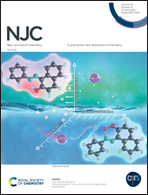An effective strategy to construct α-MoO3//PPy toward high-energy-density asymmetric supercapacitors†
Abstract
Supercapacitors often deliver a significantly high-power density with a long cycling life but low energy density. An exceedingly promising approach is to construct asymmetric supercapacitors (ASCs) reconciling the compromise between power density and energy density. However, ASCs combining transition metal oxides (TMOs) and activated carbon (AC) struggle to improve energy density due to a vast difference in their specific capacitance. To cross this hurdle, we first proposed a new strategy to construct the ASCs with α-MoO3 as the anode and conductive polymer polypyrrole (PPy) as the cathode. The remarkable features of α-MoO3, including its layered structure and ultra-high specific capacitance, along with the stability and fast charge–discharge ability of PPy, have contributed significantly to the augmentation of power density and energy density in ASCs. Taking advantage of these bright features, the operation voltage for α-MoO3//PPy is effectively expanded to 2.0 V, exhibiting a high energy density of 25.9 W h kg−1 at 1538 W kg−1. Furthermore, the energy density presented a remarkable recovery rate, reaching 91.04% of its initial state after undergoing full rate tests. These conclusions reveal that the construction of α-MoO3//PPy can effectively enhance the energy density and power density of supercapacitors.



 Please wait while we load your content...
Please wait while we load your content...